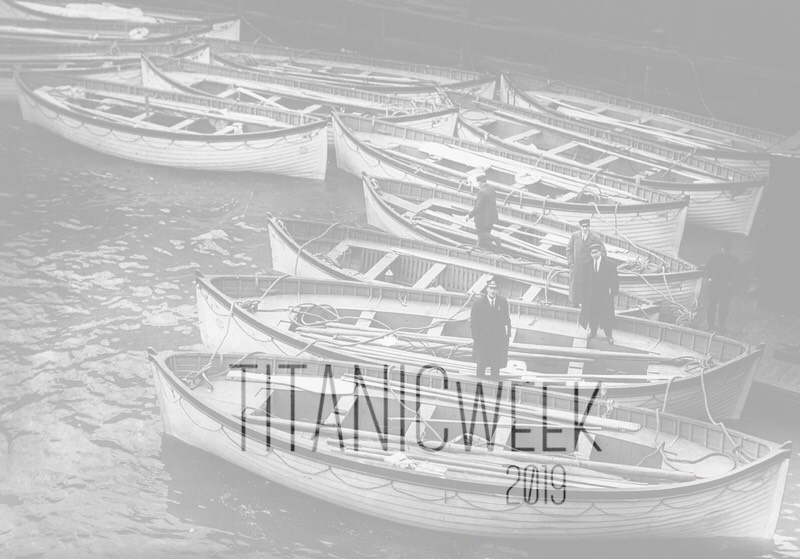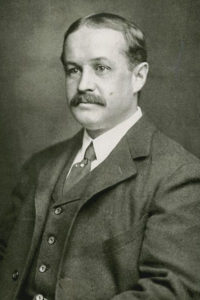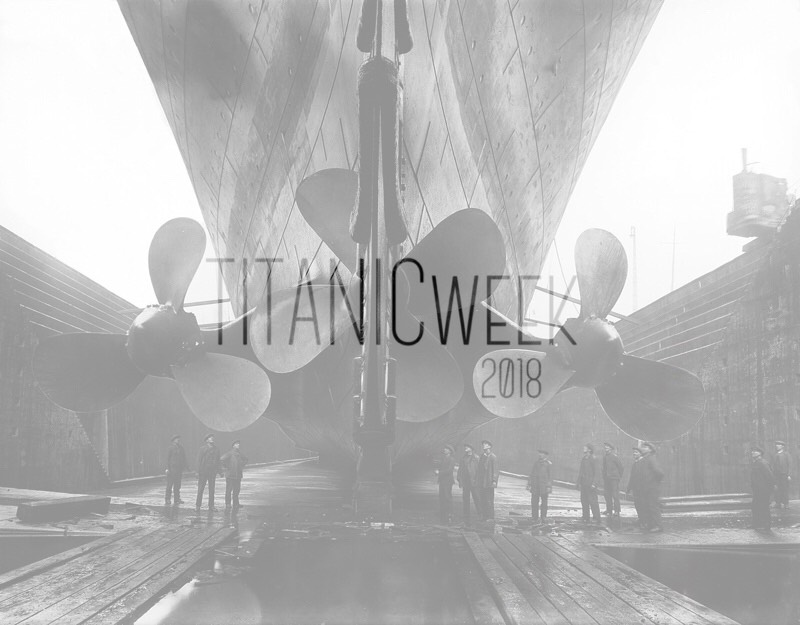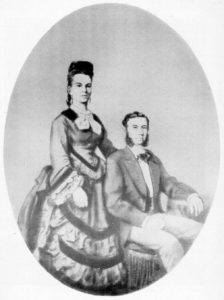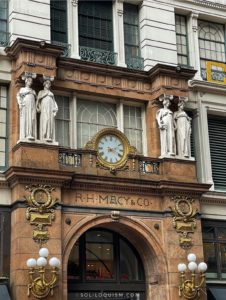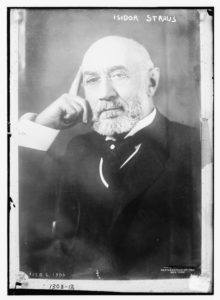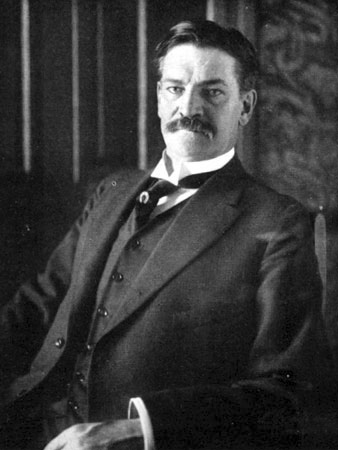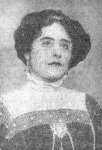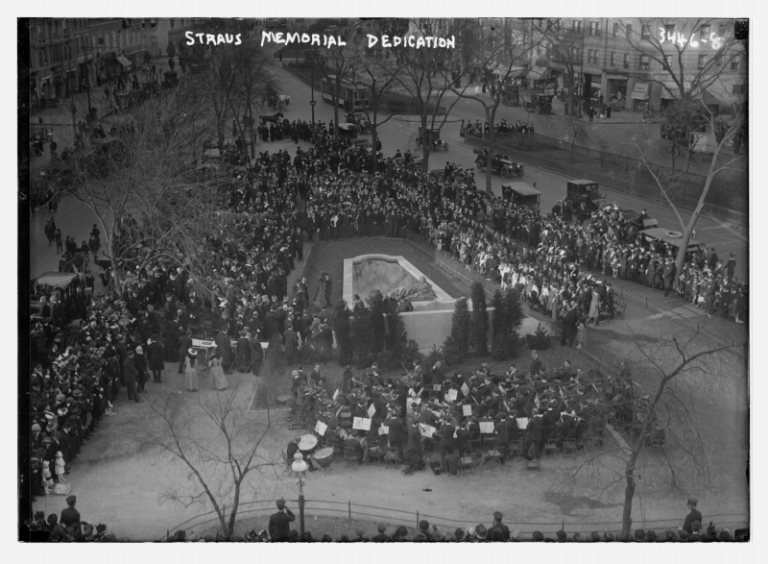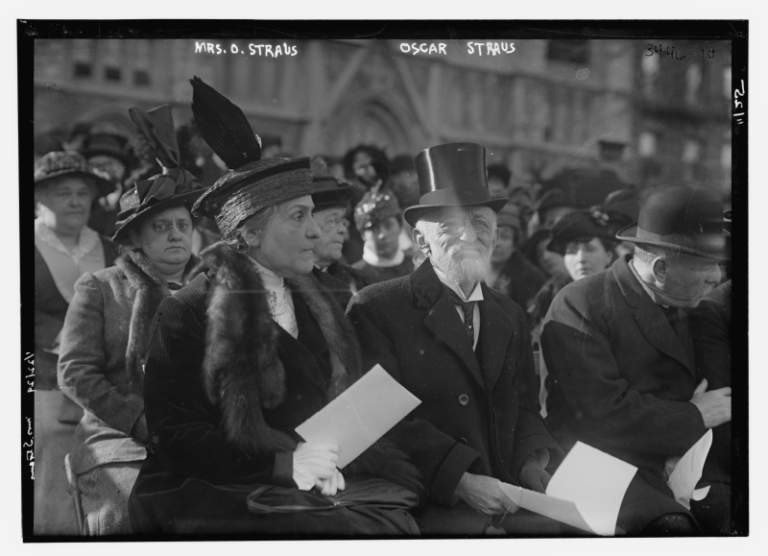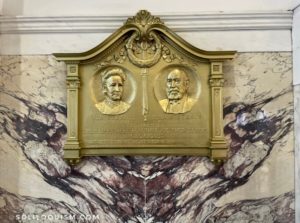"Our Brightest Star": First Officer William Murdoch
On a list of men on Titanic who have been unjustly maligned in the years since it sank, William McMaster Murdoch would certainly be toward the top of that list.

William McMaster Murdoch, taken sometime in 1907.
William Murdoch was born in Dalbeattie, Scotland, into a multi-generational seafaring family.
By the time of his appointment on Titanic, Will had a long and sterling resume of his extended career at sea himself, including surviving a hurricane sinking of the St. Cuthbert off the coast of Uruguay in 1903, a near-miss collision on the Adriatic in which his decision to override his commanding officer's orders saved the vessel, and the Olympic's collision with the H.M.S. Hawke.

William Murdoch (standing separately, far-left) with fellow R.M.S. Olympic officers & Captain E.J. Smith. Taken in 1911.
In 1904, he met Ada Banks, a schoolteacher from New Zealand, while serving on board either the Runic or the Medic. Their fond correspondence led to their wedding in 1907.
Murdoch was described as a "canny and dependable man." Survivor Charlotte Collyer described him as "a bull-dog of a man who would not be afraid of anything."
Speaking even further to the content of his character, when Murdoch was asked to sign a menu on board the Medic in 1900, he quoted Scottish writer, Charles Mackay.
Will wrote, "Whatever obstacles control, go on, true heart, thou'lt reach the goal."

William Murdoch on board the S.S. Medic circa 1900-1902.
Murdoch was First Officer on Titanic when she set sail, but was originally assigned as Chief Officer before being bumped down by Captain Smith's abrupt installation of Henry Tingle Wilde as Chief Officer.
Will was therefore demoted to First Officer, and Charles Lightoller to Second Officer.
This change was so last-minute that Murdoch didn't even have time to alter the stripes on his uniform. This led to confusion even among crewmembers, with many referring to him as Chief Officer throughout the voyage and in their survivor testimonies.
Fatefully, Will was the officer on duty and on the bridge when Titanic collided with the iceberg. And according to Quartermaster Robert Hitchens, who was helmsman, Murdoch commanded, "Hard a-starboard."
Some have speculated that Murdoch's order was unclear or otherwise misinterpreted.

Bridge of R.M.S. Olympic, Titanic's elder sister.
Regardless of Will's orders and the concentrated effort that was made, Titanic made contact with the iceberg about 37 seconds after it was sighted.
If it gives insight into the acute panic those men on the bridge must have felt in that moment, an iceberg was typically sighted more like 30 minutes out.
First Officer Murdoch was one of the first to have a true understanding of the damage, as Second-Class Chief Steward John Hardy testified.
I had great respect and great regard for Officer Murdoch, and I was walking along the deck forward with him, and he said, ‘I believe she has gone, Hardy,’ and that’s the only time I thought she might sink –when he said that.
Captain Smith ordered Murdoch to load starboard-side lifeboats, and Second Officer Charles Lightoller to load port-side.
Crucially for those who survived, Captain Smith gave the orders of "women and children."
Lightoller took this to mean "women and children ONLY," whereas Murdoch took it as "women and children first." So once all the ladies and children in sight were loaded, he permitted men aboard without difficulty.

Last photo of William Murdoch (bending) with Second Officer Charles Lightoller as Titanic prepared to depart Queenstown.
Will's less rigid approach, along with the perceived tensions between Lightoller and Chief Officer Wilde, led to Murdoch's lifeboats being turned out, hung, and sent off in a more efficient fashion: First Officer Murdoch launched multiple lifeboats in the time it took for Second Officer Lightoller to launch one.
First Officer Murdoch has been unduly criticized for this, as his early boats were not launched to capacity. But consistently across survivor testimony, Murdoch ordered those in charge of the boats to wait by the gangway to pick up more passengers, and to come back promptly when hailed.
Additionally, Willwas quoted as saying upon counting approximately forty in a lifeboat, "That’s enough before lowering. We can get a lot more in after she’s in the water. Lower away!" During the British inquiry, Lookout George Symons testified regarding a half-full lifeboat.
Because, I suppose, he had looked around the deck for other people, as well as I did myself, and there was not another passenger in sight, only just the remainder of the crew getting the surf boat ready... I saw Mr. Murdoch running around there [presumably looking for more passengers.]
Will's priority was clearly getting the boats off the divets and into the water, and yet regularly held accountable for the dereliction of duty of his crewmembers once removed from his command.
By all accounts, First Officer Murdoch was unflappably cool and calm as he launched the boats, although he still had some absurd moments while loading. For instance, while launching Lifeboat 5, he saw Dr. Henry Frauenthal and his brother jump down into the lifeboat and land on Mrs. Annie Stengel, thereby breaking her ribs.
Following that misfortune, her husband Henry Stengel, who was a portly man, had approached Will Murdoch and was told to jump into Lifeboat 1. He obeyed and in so doing, rolled over into the lifeboat, which inspired some laughter. Mr. Stengel himself testified to as much at the American inquiry.
The railing was rather high--it was an emergency boat and was always swung over toward the water--I jumped onto the railing and rolled into it. The officer then said, 'That is the funniest sight I have seen to-night,' and he laughed quite heartily. That rather gave me some encouragement. I thought perhaps it was not so dangerous as I imagined.
Also at Lifeboat 1, Murdoch seemed either exceedingly polite or supremely snide to First-Class passengers Sir Cosmo and Lady Duff Gordon.
I said, 'May we get into the boat?' and he [Murdoch] said 'Yes. I wish you would' or 'Very glad if you would' or some expression like that. There were no passengers at all near us then. He put the ladies in and helped me in.
Will then moved to launch Lifeboat 10 and the nearby collapsibles amidst mounting chaos.
Pantryman Albert Pearcey testified to a small moment that spoke to First Officer Murdoch's calm authority and conscientiousness.
ATTORNEY GENERAL: When you got to the boat deck will you tell us what you saw?
PEARCEY: I saw two babies on the deck; I picked them up in my arms and took them to the boat.
AG: Do you know what boat it was you took them to?
PEARCEY: A collapsible boat.
AG: Was there any Officer there?
PEARCEY: Yes.
AG: Who?
PEARCEY: The Chief, Mr. Murdoch.
AG: Did Mr. Murdoch give you any order?
PEARCEY: Yes.
AG: What was it?
PEARCEY: He told me to get inside with the babies and take charge of them.
Then there's the issue of the supposed shootings of passengers as they rushed Collapsible C, and which officer pulled the trigger. Survivor Eugene Daly believed that First Officer Murdoch fired the shot, as Mr. Daly thought he recognized his voice.
Others, including Jack Thayer, believed Chief Purser Hugh McElroy fired warning shots using his own pistol.
And Fifth Officer Harold Lowe was quite clear in his own United States Senate testimony about the alleged use of pistols, stating, "I heard them and I fired them."
Which leads naturally to one of Titanic's most disputed mysteries: the reported suicide of an officer.
As was attested to by a few survivors and immortalized in the 1997 film, First Officer Murdoch shot himself through the temple.
Despite this, a number of witnesses also spoke to Chief Officer Wilde and even Captain Smith doing the same.

Henry Tingle Wilde, who was made Chief Officer on Titanic, thus causing William Murdoch's demotion.
Even more witnesses speak to three steerage men being shot dead by an unknown officer. And while Titanicophiles could debate endlessly about whose character would lend itself more to suicide, since none of the main suspects were recovered, a definite answer will most likely never be determined.
It is most reasonable to turn to the most reliable of the firsthand accounts, such as those by Second-Class survivor Lawrence Beesley and First-Class survivor Colonel Archibald Gracie. Gracie said that he last saw First Officer Murdoch when he was washed away, while they were working in tandem to cut the falls to launch Collapsible A.
Furthermore, Second Officer Lightoller wrote the following to Murdoch's widow Ada.
Dear Mrs. Murdoch,
I am writing on behalf of the surviving officers to express our deep sympathy in this, your awful loss. Words cannot convey our feelings, - much less a letter.
I deeply regret that I missed communicating with you by last mail to refute the reports that were spread in the newspapers. I was practically the last man, and certainly the last officer, to see Mr. Murdoch. He was then endeavouring to launch the starboard forward collapsible boat...
...Having got my boat down off the top of the house, and there being no time to open it, I left it and ran across to the starboard side, still on top of the quarters. I was then practically looking down on your husband and his men. He was working hard, personally assisting, overhauling the forward boat’s fall. At this moment the ship dived, and we were all in the water.Other reports as to the ending are absolutely false.
Some dispute Lightoller's evidence because he was a company man, and because some insist that he would be disinclined to tell a newly bereaved widow that her husband had killed himself. But that is speculative at best.
Archibald Gracie, who had been in the immediate vicinity of First Officer Murdoch, also wrote in his account that, while Gracie and Second Officer Lightoller were both balancing for their lives on Collapsible B, that Lightoller actually spoke of seeing William Murdoch washed off the deck.
There is also, of course, the pervasive confusion about Murdoch being First Officer versus Chief Officer.
It should be noted that most passengers would not have known the names of the officers, their ranks recognized only based upon the stripes on their uniforms. William Murdoch did not have time to adjust his insignia due to his last-minute demotion upon Henry Wilde's installation as Chief Officer.
Multiple eyewitness accounts, therefore, appear to mistake Henry Wilde and William Murdoch for one another.
Moreover, some have proposed the Henry Wilde might have been more predisposed to suicidal tendencies under his personal circumstances. Specifically, Wilde was described thusly by John Smith, who wrote to his brother Hugh about what he overheard in Charles Lightoller's private conversations at the New York-located club of the International Mercantile Marine, in what is known by Titanicophiles as the Portrush Letter.
The last seen of Mr Wilde he was smoking a cigarette on the bridge. I expect he was hoping the water wouldn't put it out before he finished it. His wife died about sixteen months ago, and I have heard him say he didn't care particularly how he went or how soon he joined her. He leaves three children.
He would have been Captain of the Cymric two trips ago, only the coal strike and the tying up of some of the ships altered the company's plans.
But no matter who may have killed himself that night--William Murdoch, Henry Wilde, or another officer entirely--it is imperative to remember that the nautical culture at the time was to die an honorable death at sea having fulfilled one's duties, and suicide often fell under that sentiment. It was not a character flaw nor even cause for much alarm, as it seems to be taken today.
It was considered a noble and gallant Final Act.
Take, for instance, the account by First-Class survivor George Rheims, who wrote to his wife on April 19, 1912, of an unnamed officer's suicide with effusive admiration.
While the last boat was leaving, I saw an officer with a revolver fire a shot and kill a man who was trying to climb into it. As there remained nothing more to do, the officer told us, "Gentlemen, each man for himself, good-bye." He gave a military salute and then fired a bullet into his head. That’s what I call a man!!!
Regardless of his cause of death, First Officer William McMaster Murdoch is remembered as a hero in his hometown of Dalbeattie.
Sir Bertram Hayes, the Commodore of the White Star line, eulogized Titanic's First Officer.
"William Murdoch was our brightest star."
SOURCE MATERIAL
[ital]
